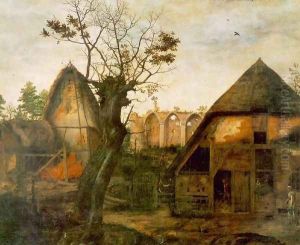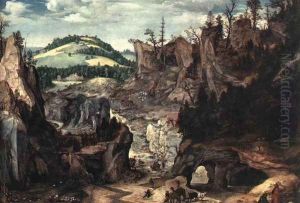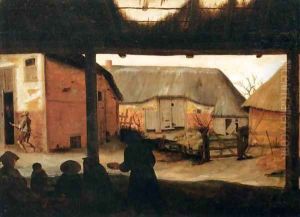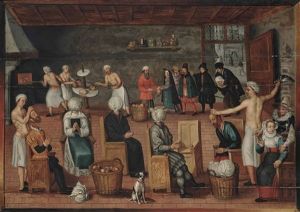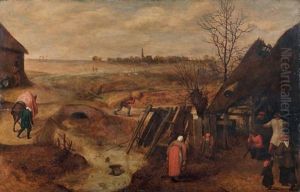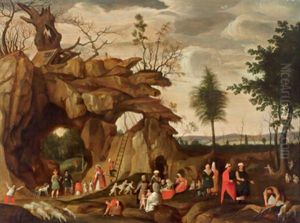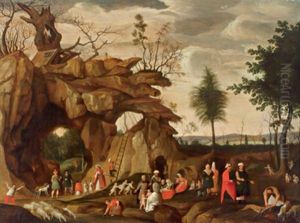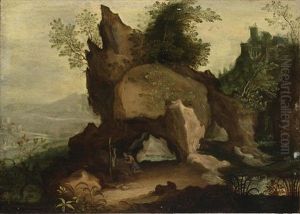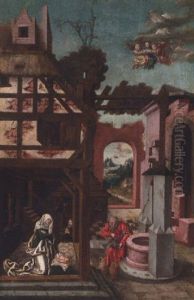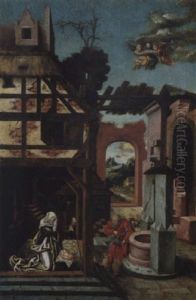Cornelis Van Dalem Paintings
Cornelis van Dalem was a notable figure in the Northern Renaissance, particularly within the Flemish school of painting. Born in 1530 in Antwerp, then part of the Habsburg Netherlands, Van Dalem hailed from a wealthy family, which allowed him the freedom to pursue his interests in art without the financial pressures that many of his contemporaries faced. His early life and training remain somewhat obscure, but it is believed that he was a pupil of the landscape painter Joachim Patinir, which had a lasting influence on his approach to landscapes, integrating them as a primary subject in his works rather than just as backgrounds.
Van Dalem's work is characterized by its innovative approach to landscape painting, where he infused his scenes with a sense of idealism and serenity, diverging from the more traditional, detailed Flemish landscapes of his time. He was among the first Northern Renaissance artists to incorporate classical ruins into his landscapes, a motif that would become increasingly popular among later artists. This incorporation of classical elements was partly inspired by the Italian Renaissance, reflecting the cultural exchange between Italy and the Low Countries during this period.
Despite his innovative approach and the quality of his work, Cornelis van Dalem did not gain the same level of fame as some of his contemporaries. However, his contributions to the development of landscape painting in the 16th century have been recognized by art historians. His works often depicted idyllic, pastoral scenes that combined both real and imagined elements, blending them seamlessly to create harmonious compositions. Van Dalem was also known for his attention to detail, particularly in his depiction of flora and fauna, which added a layer of richness to his landscapes.
Cornelis van Dalem's life was relatively short; he died in 1573 in Breda. His career spanned a turbulent period in European history, marked by religious conflict and the beginning of the Eighty Years' War. Despite these challenges, his work remained focused on the beauty and tranquility of nature, serving as a peaceful counterpoint to the turmoil of his times. Today, Van Dalem's paintings can be found in various museums and collections, offering a glimpse into the evolving landscape genre of the 16th century and the early influences of the Renaissance on Northern European art.
